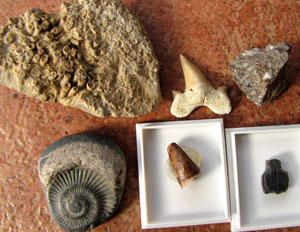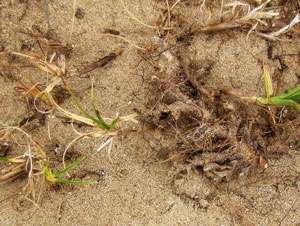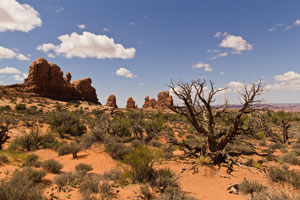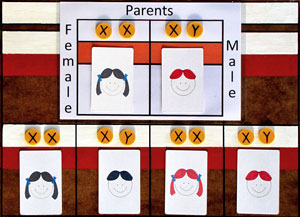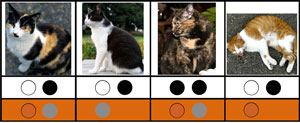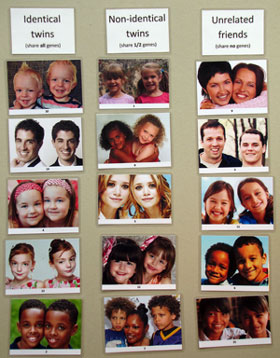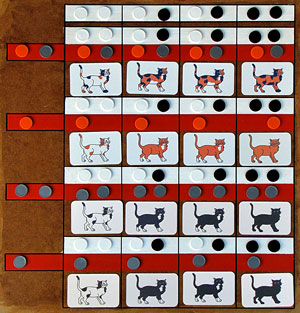
Three primary school workshops on Inheritance and Adaptation
north west 'The children were highly engaged and enthralled' - Y6 teacher manchester
This workshop is designed to cover the Evolution and Inheritance unit of the Science National Curriculum for year 6. There are three workshops:
1. Adaptation
2. Adaptation and Inheritance
3. Inheritance
These fascinating and important topics are brought to vivid life using hands-on activities, scientific puzzles, wildlife films, photos, numerous realistic models of animals and plants, games, and simulations of genetic inheritance. These challenging and enjoyable activities will help children grasp these vital concepts and provide a memorable day of learning.
Options: (click on titles for detailed lesson plans)
1. Adaptation
1. Review concepts of species and their groupings, using photos
2. Learn about evolution and the tree of life by playing two games - placing models of extinct animals on a large board showing the main branches of life over time, and in teams placing fossils on a similar tree.
3. Learn about adaptation via films, games, photos and animal models
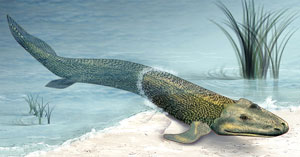
Tiktaalik, a transitional animal showing the link from fish to four-legged creatures
4. Learn about animal adaptations by choosing an animal model, researching is adaptations, and presenting them to the class
5. Learn about how evolution works by doing a simulation of the effects of camouflage with the peppered moth and seeing why it changed colour during the 1800s.
6. Apply adaptation concepts in an 'invent an alien' game
1. Learn about inheritance and variation by looking at family photos, and using 'gene' cards, dice, and puzzles to show how features are passed on through generations
2. Learn how genes work together to produce outcomes via the cat fur colour activity
3. Review concepts of species and their groupings, using films, photos and team games
4. Learn about evolution and the tree of life by playing two games - placing models of extinct animals on a large board showing the main branches of life over time, and in teams placing fossils on a similar tree.
5. Learn about adaptation via films, games, photos, and natural objects such as fossils, and by identifying (in teams) the adaptive features of realistic models of animals
This option allows children to learn a 'bit of everything' without the same depth in each subject which is possible in the other two options.
3. Inheritance
1. Learn about inheritance and variation by looking at family photos, playing a 'match the children and parents' game, and using 'gene' cards, dice, photos and puzzles to show how features are passed on through generations. Includes a look at twins.
2. Learn how genes work together to produce outcomes via the cat fur colour activity.
This option takes a more in depth look at inheritance. Compared to the previous option, there are more activities and more time on each activity, allowing children to get a better grasp of this difficult subject. Suitable for more able classes.
Introduction to the Workshops
Before 1859, many scientists had accepted the theory of evolution - the idea that living things had changed through time, branching into many groups and species and creating the astonishing diversity of life today. The fossil record made it clear that many creatures different from those of today had lived long ago and died out, and yet had left descendants which possessed some of those ancient features. However, it was not understood HOW evolution worked.

Then Charles Darwin published 'The Origin of Species' - a book which changed the world through its revolutionary yet compelling idea that life had evolved through natural selection. Darwin proposed that in the struggle for life, most animals could not survive to reproduce and raise offspring.
Any organisms which inherited features which gave them an advantage over others - such as a slightly longer neck in a giraffe, or sharper teeth in a lion - had a greater chance of survival, and so of passing on these features to their offspring. In time these better adapted features should increase in a population, and so eventually new species would arise.
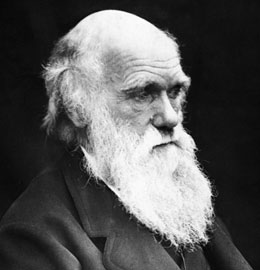
That in a nutshell is the theory of natural selection, now accepted as fact by virtually all scientists. Along with modern genetics it is the basis for a true understanding of life on earth.
Watch a short film I made showing the diversity of life on earth. I have spent many hours in parks, zoos and natural areas, filming numerous types of animals, in order to make a wide variety of such films. They will mainly be used to teach children about the many forms of adaptation in the living world.
Please note that this means we will need your whiteboard to be functioning well, with good visibility.
Watch my 1-minute dragonfly film
See my insect and other photos on my photography website: artofmacro.com
Learn about the History of Life on Earth
Print your own human evolution worksheet (plotting a graph of brain size and drawing a hominin skull)
Watch a fantastic David Attenborough film about Charles Darwin and the Tree of Life (Youtube)
To Book The Workshop:
Contact: Tony North
Email: tnorth67@hotmail.com
Tel: 07754 406422 or 0161 224 6445
Fee: £329 per class for a whole day. Max. 32 children.

Topics covered:
1. Species - their enormous diversity
2. How species are grouped into hierarchies (e.g. dinosaurs are reptiles, which are vertebrates, which are animals).
3. The tree of life - how animals and plants evolved over millions of years forming a many-branched tree with numerous classes and species, each with distinctive features
4. Adaptation - how many of the features of living things are adaptations to their environments, helping them survive and reproduce in various ways (e.g. flippers helping dolphins and whales to swim, peacocks' feathers attracting peahens, spines protecting hedgehogs from predators).

5. Inheritance and variation - how offspring inherit qualities from their parents, and yet vary slightly from them (e.g. children look similar to their parents, and perhaps have similar skills or personalities)
Fossils for sale
Children can buy genuine fossils at all science workshops. These include sharks' teeth (see below), ammonites, seashells, corals, plants and more. Dinosaur toys and stickers may also be available. Prices range from 20p up to £3.

'The children were highly engaged and enthralled.' - Y6 teacher
'Mr North's impressive subject knowledge combined with his extensive range of resources enabled him to engage and motivate all pupils from the start.' - Y6 teacher
'The children really enjoyed the day and seemed to gain a lot from it (especially from such a difficult subject to grasp)' - Y5 teacher
Photos from an Adaptation Workshop at St. Richard's in Manchester, Sept 15

Lesson Plans
1. Introduction to Evolution (15 minutes)
We begin with a question: why are there so many species of living thing? About 1.5 million are known, and according to some estimates there are over 10 million in all.
We discuss the idea that all living species have evolved over a vast period of time: they have changed in order to adapt to their environments. This began about 4 billion years ago with tiny bacteria and continues today. This leads us to an astounding fact - all living things are related.
The first person to explain how evolution worked was Charles Darwin. This workshop is all about the how and why of evolution - the tree of life and adaptation.
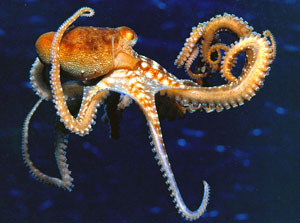
Next is a quick look at how animals are classified into groups - which themselves have evolved. We look at a few important animal phyla - cnidarians (jellyfish, corals, sea anemones), molluscs (squids, shellfish, snails), arthropods (insects, spiders, scorpions, centipedes), and vertebrates (fish, amphibians, reptiles, mammals, birds). Each of these groups is very different from the others, but all are related, although their common ancestors lived over 600 million years ago.
2. The Tree of Life (45 minutes)
We look at a large painted board (60x200cm, see below) which shows a simplified tree of life - the branches which show the relationships through time between the four phyla we have already looked at, as well as the main branches of vertebrates (fish, birds, mammals, etc. but also dinosaurs, ichthyosaurs, plesiosaurs, and primates). The geological periods and their dates are also marked, going back 660my (my=million years). For a detailed page on this topic go here.
Tree of Life game - click for larger version and see picture below
To learn about the tree and the periods of earth's history, children play a game: they are given a model of a prehistoric animal such as a dinosaur or ammonite. They are told its age in millions of years, and they must place it on the board in the right place - the right period and the right branch.
There follows a short quiz to enrich understanding - for example working out the period in which a type of animal first evolved (e.g. dinosaurs in the Triassic), or the ancestral history of modern groups (e.g. humans are apes descended from primates, then from mammals, reptiles, tetrapods, and fish).
Finally children work in their 8 teams with their own tree of life picture (click photo above). They must place 6 fossils (dinosaur bone, trilobite, ammonite, shark tooth, coral, crocodile tooth - see photo below) on the tree in the right place, and answer some more questions about the tree. This will enrich their understanding of the history of evolution.
Click for larger version
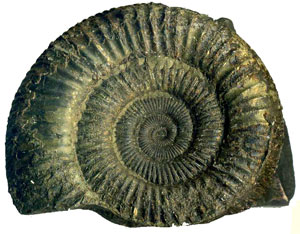
Ammonite, Dactylioceras commune, from Whitby: 190 my

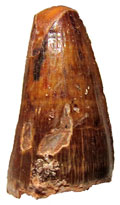
Trilobite from USA: 500 my, and crocodile tooth: 80 my
3. Adaptation films (20 minutes)
Why do species have their particular features? Why have birds evolved feathers, and fish fins? We now look at adaptation - the countless ways in which animals have changed through evolution to survive and reproduce in their environments.
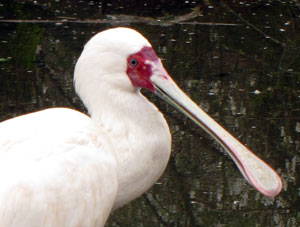
Spoonbill - it swishes its strange bill through the water, sensing and grabbing food
First we watch 2-3 short films (which I have made myself). These illustrate a few of the most important kinds of adaptation - for feeding, moving, and sensing.
After each film we discuss the various ways in which animals have adapted for that purpose.
4.
Camouflage game (15 minutes) - look at photos and try to spot the animal, whether predator or prey (thi is very popular!). Can you survive the predators, and eat your prey?
Spot the spider (click for larger version) 5. Mimicry game - look at
photos of animals (butterflies, frogs, wasps). Try to work out
whether they belong to an unpalatable (poisonous) species, or are
palatable mimics which have evolved to look like the unpalatable
species, so as to avoid being eaten. Monarch butterfly - tastes bad to predators 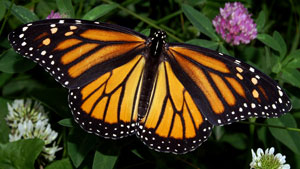
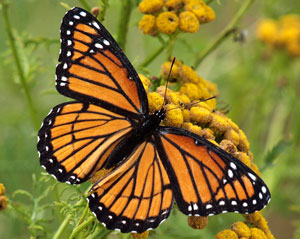
Is this a Monarch, or a Viceroy, which mimics the Monarch?
Lesson plan continues in next column
6. Model Game (30 minutes)
Children look at three high quality, realistic animal models they have on their tables. Each group picks one and explains to the class how it is adapted for survival. For example, they could explain how a tiger has sharp teeth and claws for killing prey, how a whale has evolved flippers for swimming, or how an eagle has developed very keen eyesight for spotting prey. Each group has a sheet of information on the animals to help them.
7. Camouflage Experiment (45 minutes)
Next, we reenact the famous case of the evolution of the peppered moth. In the early 1800s this moth was a light, mottled colour (see below), camouflaged against the lichen-covered bark of trees in England.
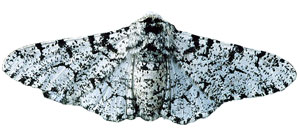
By the end of the 19th century, in areas like Manchester, this form of the peppered moth had been almost entirely replaced by a darker mutant (see below). The reason was that industrial pollution had darkened the trees, so the lighter moths were no longer camouflaged and were being eaten by birds.
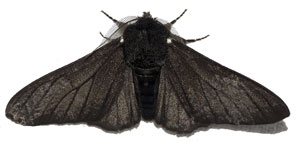
Children pretend to be a bird predator and try to spot the two varieties of moth on light and dark tree backgrounds. By comparing the numbers of moths seen, we will work out how evolution occurred in this situation.
This activity gives children an experimental understanding of how camouflage works, and it also gives us an introduction to the important concept of natural selection - the mechanism by which evolution works.
7. Alien Evolution Game (45 minutes)
We play a fun game to finish the day. Each team is given one of 8 habitats and invents either a predator or prey animal, adapted both to its environment and to other animals. For example a cheetah is the fastest four legged animal with many adaptations to help it chase its prey, such as a very long and flexible spine. However, its prey, the Thompson's gazelle, is also one of the fastest animals on land and has evolved this speed to escape cheetahs.
![]()
Creature from the movie Avatar
The twist in this game is that we imagine we have travelled to another planet, so children can create brand new creatures - as long as they are properly adapted. They use marker pens and large sheets of paper to create their animals, and then present them to the class. With fossil prizes for the best presentation.
Desert habitat - others in the game are rainforest, savanna, ice cap, mountains, woodland, wetland, and coral reef
In this workshop you can give your children a bit of everything. We look at inheritance in the morning, then turn to the (conceptually easier) topics of the tree of life and adaptation in the afternoon. The afternoon session is similar to the morning session of the adaptation workshop - we cover activities 1-4 (see description above)
In the morning we look at inheritance, focusing on the mechanism of inheritance - chromosomes, genes, and the Mendelian laws of inheritance.
These vitally important ideas are difficult, so I have carefully crafted activities which will help children and teachers get to grips with them. To bring the concepts to life, and make them more fun, we use photos, dice, counters and cards, in a variety of games and simulations.
1. First we discuss inheritance - how we resemble our parents both physically and in our behaviour and personality.
Game- identify children from their parents. In 8 teams, children try to assign photos of children to photos of their parents (including both famous and non-famous families). We discuss how similar children are to their mothers and fathers, and why this might be (if time is short we will omit this game)


Lesson plan continues in next column
2. Genetics - we take a (simplified) look at how inheritance works, by means of chromosomes and genes, which come in pairs (called alleles).
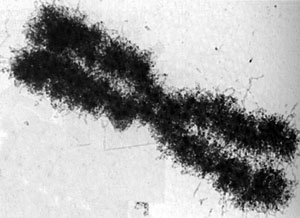
photo of a chromosome - the DNA strands are visible
Sex Chromosomes
We look at how X and Y chromosomes are inherited to determine gender, using cards, counters and dice (see below). Children learn why half the world's population is male and half female, and yet in any one family there may be only boys or only girls - a matter of probability. Each team randomly creates a family of four using dice and we look at patterns across the class. We compare these data to the figures for the school, and the UK as a whole.
Genes
Next we focus on genes. Gregor Mendel's experiments on peas showed us how traits are caused by indivisible factors called genes, which come in pairs. One of the pair is often dominant- so a pea flower with a purple gene (P) and a white gene (p) will end up purple, as the purple gene is dominant.
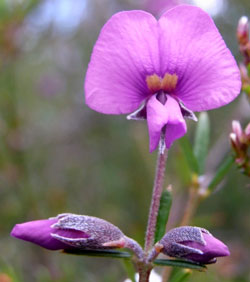
The genotype for this flower is either PP or Pp - both result in a purple colour

The genotype for this flower must be pp (two recessive genes)
Using gene cards and dice we look at how a plant or animal inherits half of its genes from its mother and half from its father, but the halves are randomly selected from all the pairs of alleles. This is why two siblings can be very different from each other.
3. Cat Fur Colour
For the rest of the morning session we look at the inheritance of coat colour in cats. Cat colour is caused by several genes, which combine to produce an end result (the 'phenotype'). For example, a cat with the dominant white spotting gene and one dominant orange gene, if female, will usually be a white tortoiseshell (see below) - usually, because other genes can modify this pattern.
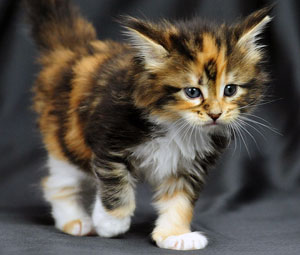
First we look at how the 'white spotting' gene (S) and the 'orange' gene (O) work separately. In each case after a demonstration children work in their groups, first working out the genotype of cats in photos, using counters instead of letters to help make the concept clear.
As we see in the first cat above, a cat with one dominant white spotting gene and one recessive gene (Ss) will be less than half white (we assume the other colour is black for now). A cat with two dominant genes (SS) will be mostly white. A cat with two recessive genes will have no white (here, all black).
After this the teams use counters and cat phenotype cards to see what possible kittens come from parents with different genotypes. Children answer questions to help them grasp important features of inheritance - namely, how parental genotypes affect:
-
the chance of different types of offspring
-
the chance of offspring being different from their parents
-
the amount of variation in offspring
Next, we look at how the white and orange genes have a combined effect. Again children solve photo puzzles. For example, a cat with Ss and Oo genes will be a tortoiseshell with some white patches (the first cat below):
In this workshop we spend the whole day on
inheritance, allowing children to get a much deeper understanding of
this tricky subject.
We carry out all the inheritance
activities described in the
adaptation and inheritance lesson, spending a
little more time to ensure depth of understanding. In addition we
have several more activites:
1. Simulation of
6 gene inheritance After looking at the Mendelian model of
how genes work, we use a diagram, playing cards (standing for
genes), and dice to see how one baby might inherit 6 genes in a
certain pattern, which might be different form its siblings. We
randomise the inheritance of each allele and see how similar and
different siblings can be from each other and also from their
parents. 2. Twins After the family game (at the start of the
lesson), we look how identical twins share all their genes while
non-identical twins share about 1/2 (like ordinary siblings). Children play a game in
which they sort 3 groups of photos - identical twins, non-identical
twins, and unrelated friends. This teaches them how physical
appearance is largely inherited, and how siblings can look very
similar but also very different, because of the random mix of genes
they get from their mothers and fathers. Includes the amazing
case of the twins who appear to be of different races. 3. Cat Fur Colour Extension Activity After looking at the interaction between the two fur colour genes (white
spotting and orange), children are taught how to lay out the 16 possible kittens resulting from two
parents. The photo below shows the board used by each team -
similar to the tables used by scientists to work out gene
combinations, known as Punnett Squares. Again teams answer
questions about inheritance and variation in offspring.
The most interesting outcome of
this activity is the fact that 2 parent cats can produce kittens with
up to 9 different coat patterns. This is a vivid demonstration of
genetic variation.
4. Mutation
We finish the day with a look at the vital importance of
mutation in evolution.
The inheritance activities have shown children how genes combine to
produce offspring which are similar to, but often different from,
their parents - and their siblings too. This variation due to
recombination of genes is part of what allows natural
selection to take place.
But on its own, it is not enough.
Our genes have been passed down through millions of
generations, back to the earliest animals which walked on land,
and the fish which came before them (and all the way back to the
first living thing). And yet we are not fish! If genes are copied
each generation, how can there be so many different species? Where
do new genes come from to create new adaptations?
The answer is mutation.
Very
occasionally a gene mutates, due to copying errors, radiation, or
other reasons. Usually this has no effect. Sometimes it is
harmful, and the animal often dies before passing the gene on.
However, on rare occasions the mutant gene is helpful - for
example it may give a giraffe a longer neck. A mutation such as
this is what allows natural selection to work.
'The activities were fantastic and really engaging with lots of maths involved as well.' - Jo Stocks, St. Patrick's RC Primary, Liverpool
'The children really enjoyed the day and seemed to gain a lot from it (especially from such a difficult subject to grasp). Your resources and knowledge were excellent and children really liked the consistent fossil rewards; this really piqued their interest. I'd like to thank you for your hard work throughout the day and your flexibility during the booking progress. I will be in contact again.' - Andrew Pritchard, Alvanley Primary, Cheshire
'Thank you for delivering 'Evolution Part 1' to our Year 6. The children really enjoyed it and can not wait for Part 2. We all had an excellent day. The content matched both the Science and the History framework and it was delivered with your usual expertise. The practical activities furthered the childrens' understanding and they were highly engaged and enthralled. We are all looking forward to Session 2.' - Debbie Fitzpatrick, St Aidan's Catholic Primary School, Manchester
'Mr North has just delivered the 'Evolution' workshops (Adaptation and Natural Selection) to my class and they were both fantastic. Mr North's impressive subject knowledge combined with his extensive range of resources enabled him to engage and motivate all pupils from the start. The activities were highly interactive and fun and pupils were really challenged to think deeply about this complex topic of evolution. Effective questioning and dialogue enhanced the learning at all times throughout the sessions and the great organisation meant the active learning time was maximised. I cannot recommend these workshops highly enough as Mr North is truly an expert on the topic.' - Andrea Toal, Year 6 teacher, St. Richard's RC Primary, Longsight
'Tony North visited my Year 6 class to teach us all about Evolution and Inheritance. As teachers, we felt this may be a very difficult unit to teach as it is a broad unit and new to the curriculum. Tony worked for us for two full days, teaching us about Adaptation and Natural Selection.
Day one was thoroughly enjoyable and the children could not wait for Tony to return. The children were introduced to Charles Darwin and his theory of Evolution. They worked in small groups understanding and participating in numerous activities related to Evolution and Inheritance. All of these activities were engaging for the children. As well as this, Tony rewarded the children with real fossils for answering questions.
In particular, the children loved the activity the "Tree of Life". This gave them the opportunity to learn about the evolution of animal groups over millions of years including identifying fossils and also placing them on the "Tree of Life". Lastly we ended the day with a carousel of activities. The children experienced the effects of camouflage, the evolution of birds, grouping carnivores and herbivores and ordering extinct and modern animals to learn about transitions in evolution. Subsequently, the children gained a much wider bank of knowledge related to adaptation.
Day 2 consisted of learning all about inheritance and natural selection. This day started off much more complex, however, the children were highly engaged throughout. Tony created fantastic, hands on games for all abilities to develop a further understanding. We did this through genes, inheritance, chromosomes and cells. The children found it very fascinating that 37 trillion cells were in their body. The "Cat Fur Colour" activity was the children's favourite. This made it very easy for them to understand how cats pass on different genes to their offspring.' - Miss K Hegarty, Year 6 teacher, St Richards RC Primary School, Longsight


